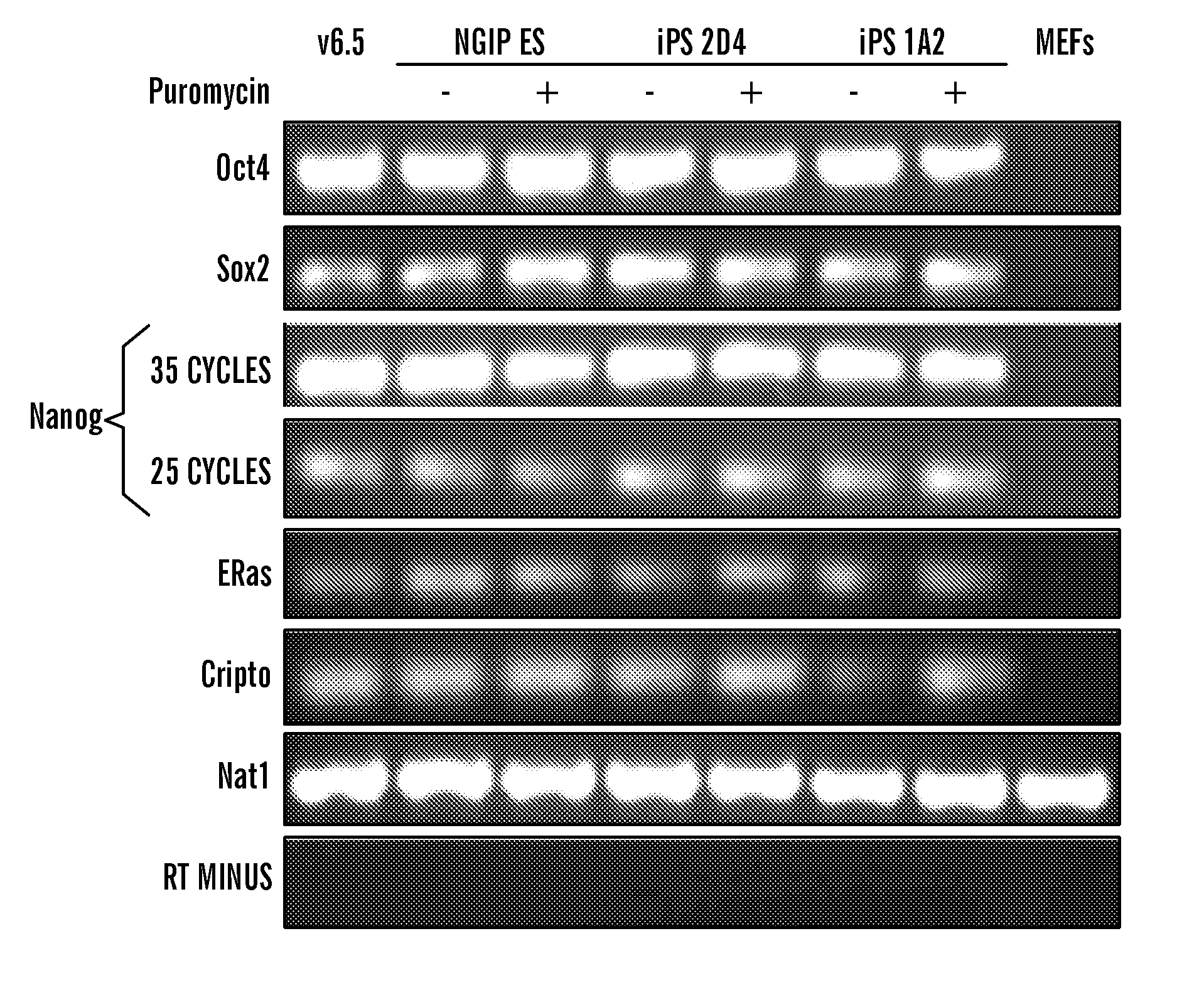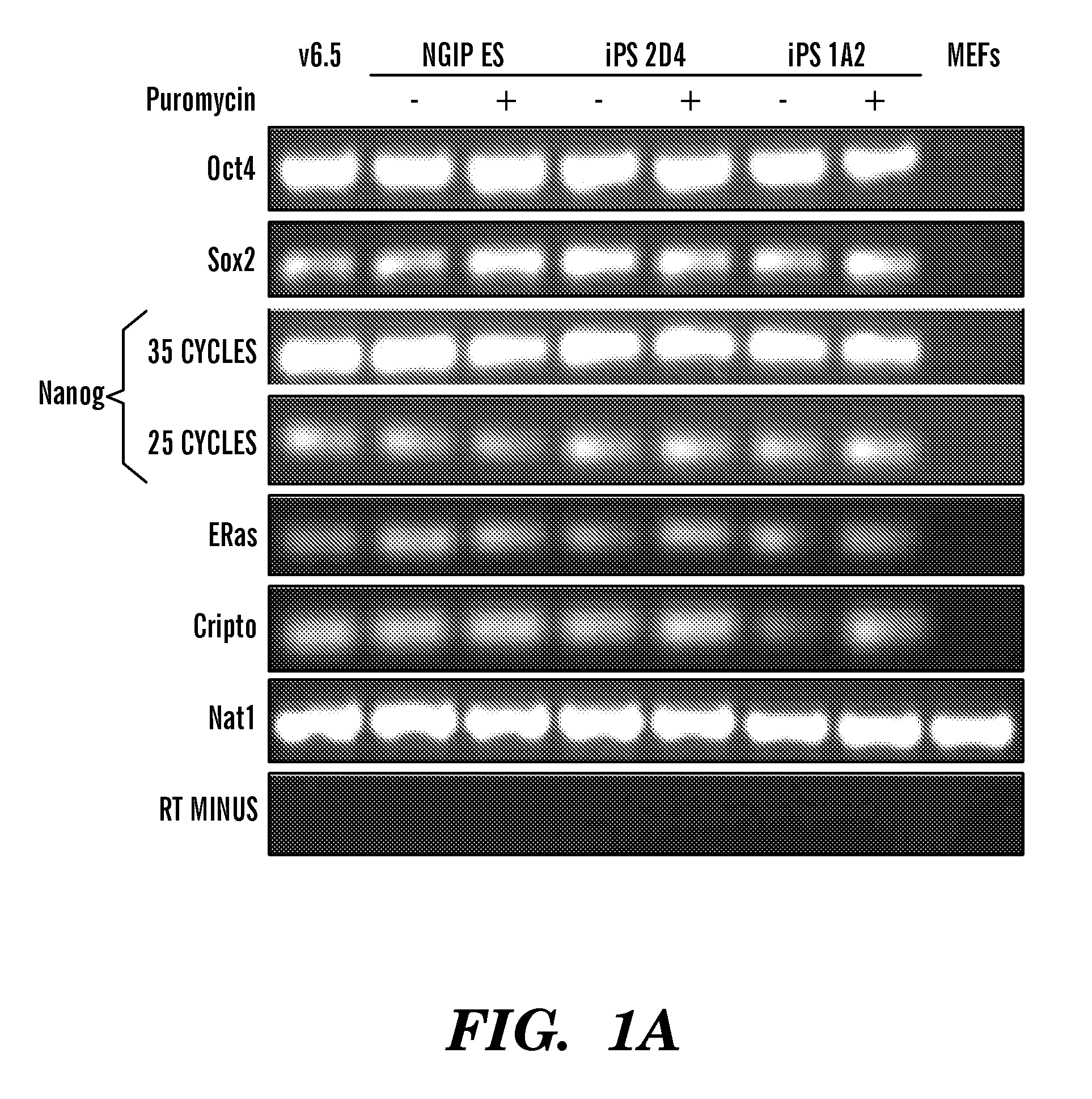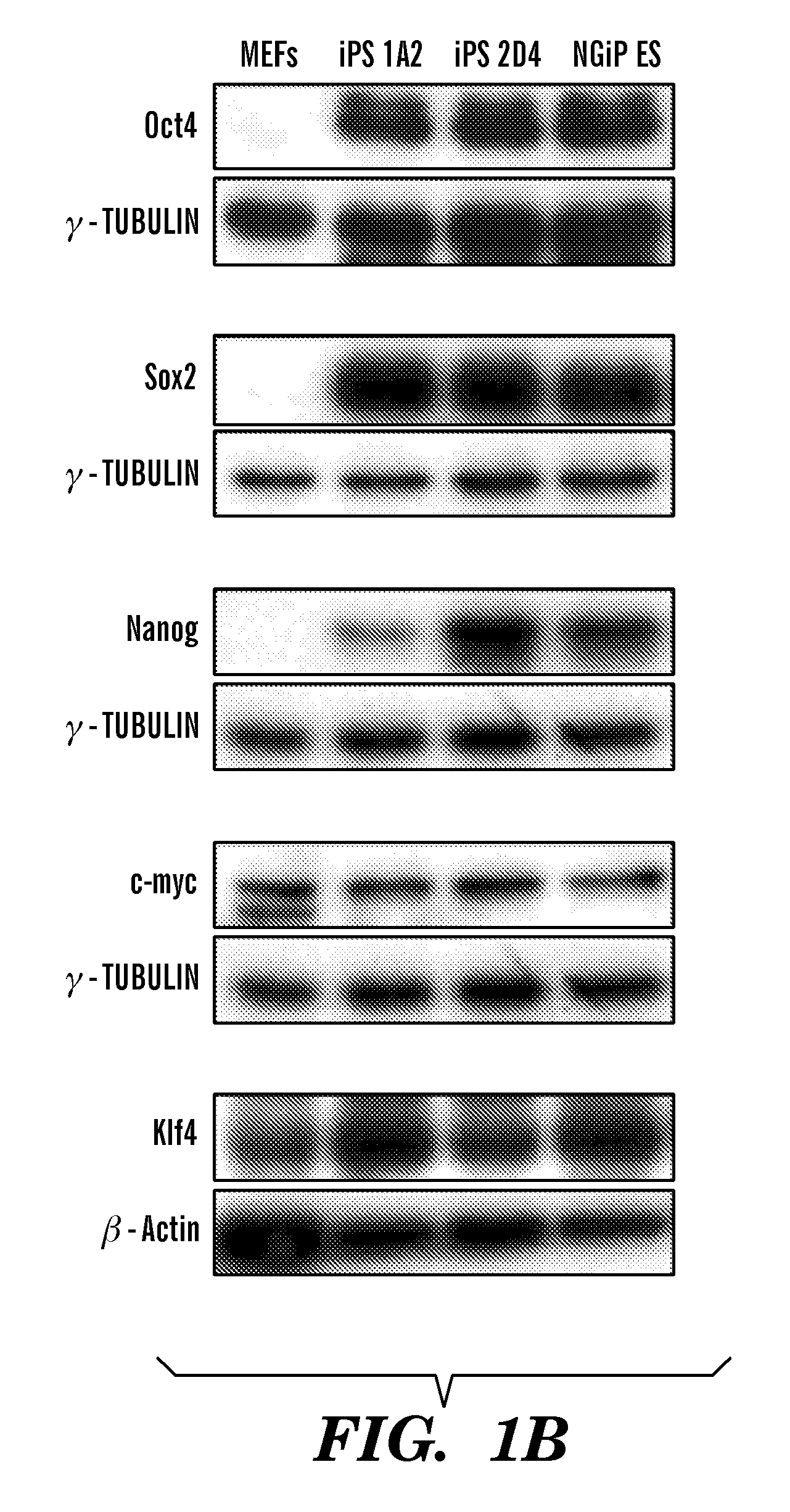Methods of generating pluripotent cells from somatic cells
a somatic cell and cell technology, applied in the field of somatic cell genotoxic cell generation, can solve the problems of not being able to generate many non-es-like cells in addition, unable to achieve the effect of human cell genetic selection techniques, and generally neither desirabl
- Summary
- Abstract
- Description
- Claims
- Application Information
AI Technical Summary
Benefits of technology
Problems solved by technology
Method used
Image
Examples
example 1
Generation of iPS Cells Using Nanog-Selectable Fibroblasts
[0138]Female mouse embryonic fibroblasts (MEFs) carrying a GFP-IRES-Puro cassette in the endogenous Nanog locus, referred to as Nanog-GFP-puro (Hatano, S. Y., Tada, M., Kimura, H., Yamaguchi, S., Kono, T., Nakano, T., Suemori, H., Nakatsuji, N., and Tada, T. (2005) Mech Dev 122, 67-79), were retrovirally infected with cDNAs encoding Oct4, Sox2, c-MYC—T58A mutant, which stabilizes the protein (Sears, R., Nuckolls, F., Haura, E., Taya, Y., Tamai, K., and Nevins, J. R. (2000) Genes Dev 14, 2501-2514)—and Klf4. In contrast to the previously reported Fbx 15 selection, which was applied three days after infection (Takahashi and Yamanaka, 2006), selection for Nanog expression at three days post-infection resulted in no colonies, suggesting different reactivation kinetics of the Fbx15 and Nanog genes. When selection was applied seven or more days following infection, resistant colonies reproducibly emerged. Of the five lines that wer...
example 2
Nanog-Selectable iPS Cells Confer an Es Cell-Like Phenotype Upon Somatic Cells
[0140]To determine whether Nanog-selectable iPS cells possess functional attributes similar to ES cells, the ability to impose an ES-like phenotype upon somatic cells in the context of cell fusion was tested. Cells from the puromycin resistant 2D4 iPS cell line with hygromycin-resistant MEFs (FIG. 2A). Two weeks after fusion, seven double-resistant tetraploid hybrid clones that had an ES cell-like morphology and continued to express Nanog-GFP (FIG. 2B and data not shown) were recovered. One hybrid colony was recovered when control Nanog-GFP-puro ES cells were fused with hygromycin-resistant MEFs. To test pluripotency, hybrid cells were injected into immunocompromised mice; after four weeks, teratomas containing cell types representative of all three germ layers were isolated (data not shown).
[0141]As a test for reprogramming of the somatic cell genome, the fusion experiment was repeated with MEFs that cont...
example 3
Ectopic Oct4 Expression is Dispensable for the Maintenance of iPS Cells
[0142]Fbx15-selected 2D4 iPS cells showed persistent retroviral expression of Oct4 and Sox2 with negligible expression from the respective endogenous loci, suggesting a continuous requirement for the exogenously provided factors to maintain the self-renewal and pluripotency of iPS cells (Takahashi and Yamanaka, 2006). To corroborate the gene expression data that suggested efficient retroviral gene silencing in iPS cells, it was decided to genetically test whether continuous Oct4 expression is required for the maintenance of iPS cells by using fibroblasts carrying a doxycycline-inducible Oct4 transgene in their genome (Hochedlinger, K., Yamada, Y., Beard, C., and Jaenisch, R. (2005) Cell 121, 465-477) (FIG. 3A).
[0143]To initially determine whether colonies could be obtained using the Oct4 inducible system, Oct4-inducible MEFs were infected with Sox2, c-MYC, and Klf4 retroviruses without any selection. In the absen...
PUM
| Property | Measurement | Unit |
|---|---|---|
| time | aaaaa | aaaaa |
| thickness | aaaaa | aaaaa |
| E class threshold | aaaaa | aaaaa |
Abstract
Description
Claims
Application Information
 Login to View More
Login to View More - R&D
- Intellectual Property
- Life Sciences
- Materials
- Tech Scout
- Unparalleled Data Quality
- Higher Quality Content
- 60% Fewer Hallucinations
Browse by: Latest US Patents, China's latest patents, Technical Efficacy Thesaurus, Application Domain, Technology Topic, Popular Technical Reports.
© 2025 PatSnap. All rights reserved.Legal|Privacy policy|Modern Slavery Act Transparency Statement|Sitemap|About US| Contact US: help@patsnap.com



